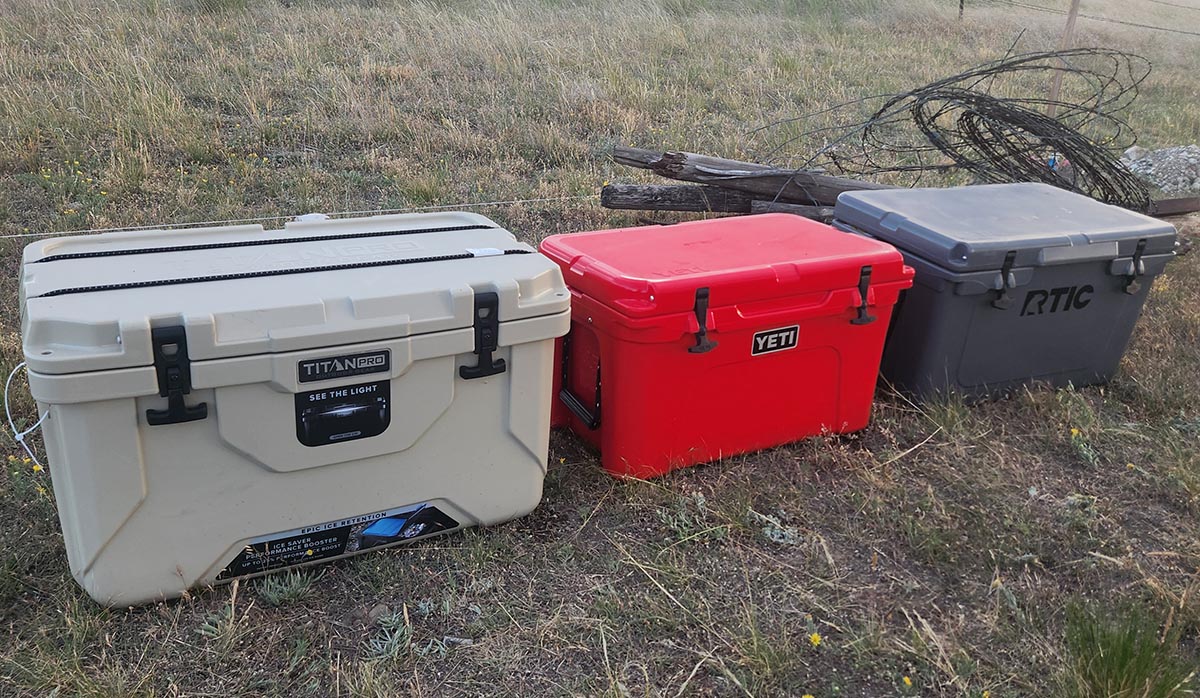We may earn revenue from the products available on this page and participate in affiliate programs. Learn More ›
As cooler designs have improved in recent years, brands have ramped up their efforts to position their coolers as the best on the market. I wanted to see just how well some of the best coolers could preserve ice, of course, but I was also interested in assessing other standout features that distinguish each model from the competition.
I spent several weeks camping, rafting, and testing three of the market’s favorite models: the RTIC 45-quart, Yeti Tundra 45-quart, and Titan Pro 55-quart models. They alternated between full sun, backyard patio spaces, and the bed of my truck. I analyzed each for ice retention, functionality, durability, and practicality.
While cooler companies conduct in-house tests at full ice capacity, I wanted a more realistic assessment, so I only used two bags in each cooler at a time. For consistency’s sake, I stored equal amounts of drinks in each cooler. For the initial test, I left the coolers in my yard in full sun for several days. Then, I took them out on a few rugged camping trips where they were subject to a range of weather conditions.
RTIC 45 QT Ultra-Tough Cooler: At a Glance
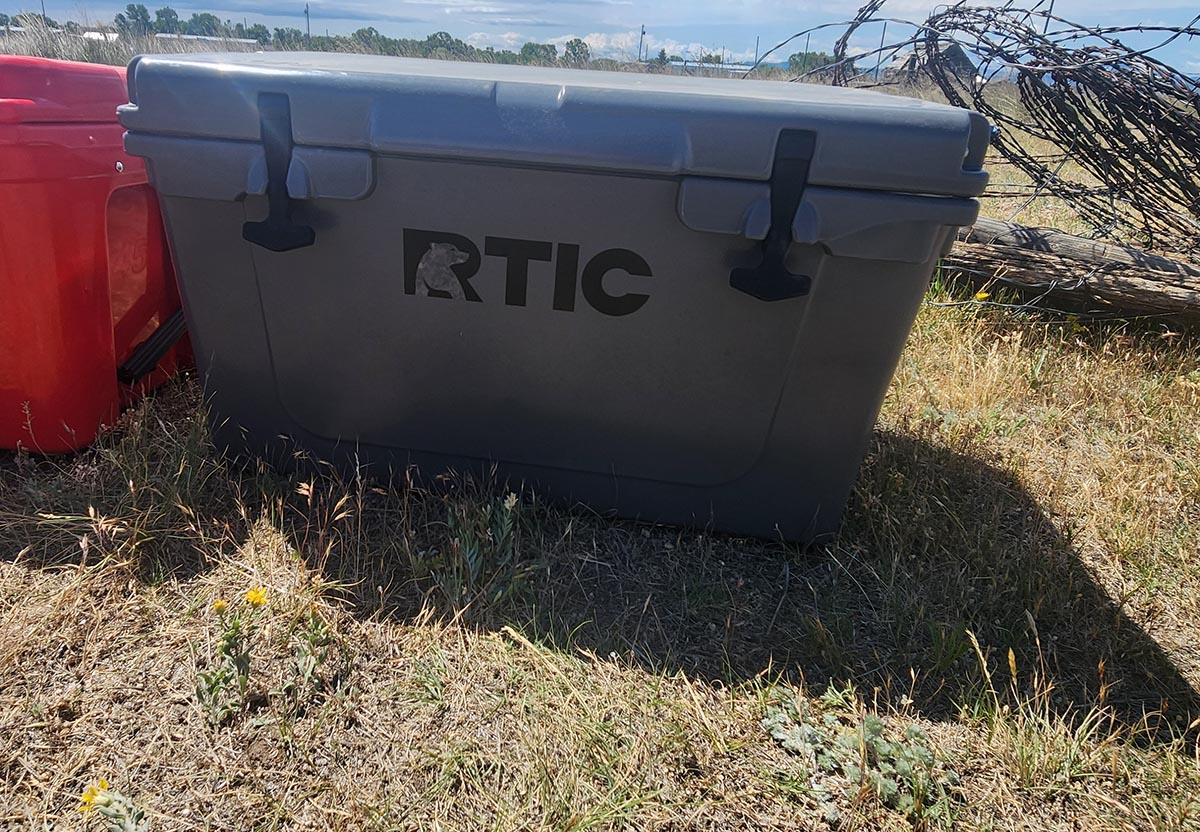
Rating: 9/10
SPECS
- Construction: Rotomolded
- Capacity: 45 quarts or 58 cans
- Dry weight: 26.6 pounds
WHAT WE LIKE
- Great price point for a rock-solid cooler
- Doubles as an excellent seat
- Simple, durable design with replaceable parts
WHAT WE DON’T LIKE
- No advanced features, such as interior lights
Get the RTIC 45 cooler at:
Yeti Tundra 45 Hard Cooler: At a Glance
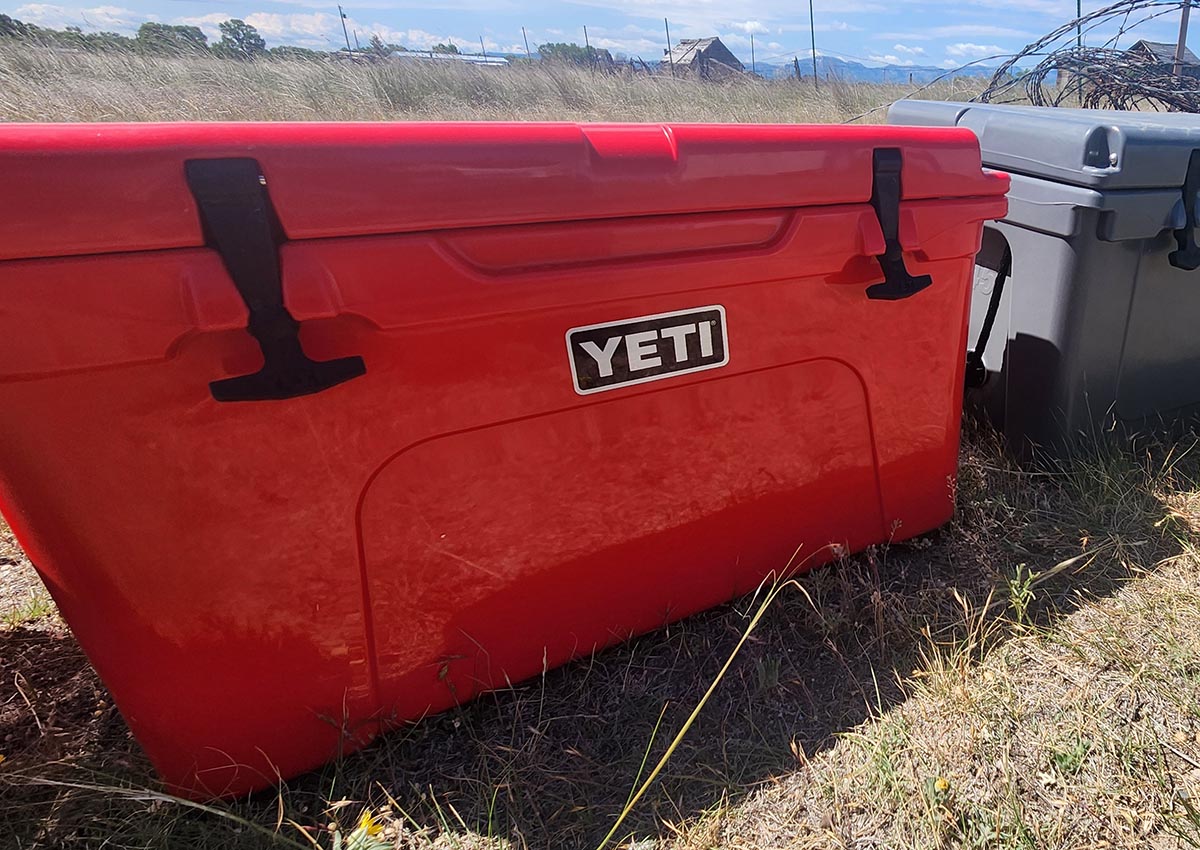
Rating: 9/10
SPECS
- Construction: Rotomolded
- Capacity: 45 quarts or 54 cans
- Dry weight: 24.6 pounds
WHAT WE LIKE
- Preserves ice longer than most other coolers
- Lockable, certified bear-proof design
- Excellent design for boating; doubles as a seat
WHAT WE DON’T LIKE
- Costlier than other models of similar size
Get the Yeti Tundra 45 cooler at:
Titan Pro 55Q High Performance Roto Hard Cooler: At a Glance
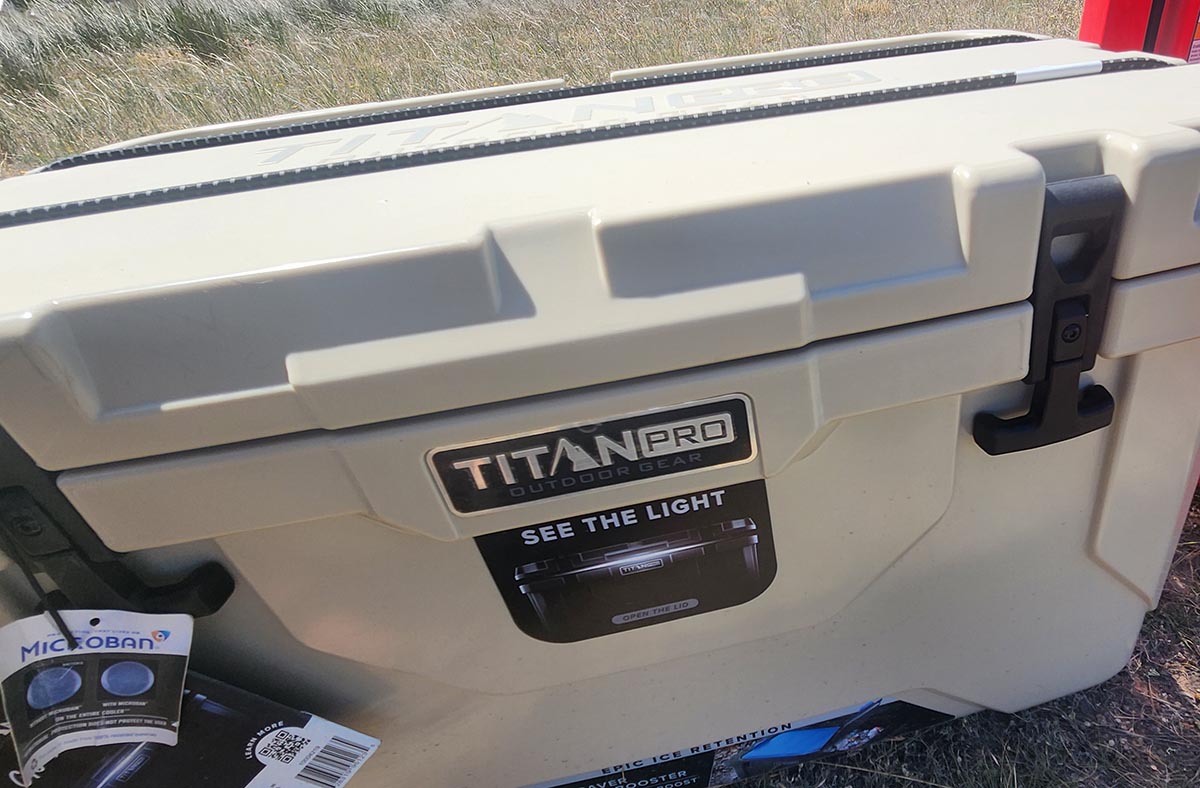
Rating: 9.5/10
SPECS
- Construction: Rotomolded
- Capacity: 55 quarts
- Dry weight: 31.95 pounds
WHAT WE LIKE
- Bright LED light is very useful at night
- Lid’s gear bungees help secure nearby items quickly
- High capacity; preserves ice for a long time
WHAT WE DON’T LIKE
- Highest price of all models in the test
Get the Titan Pro 55Q cooler at:
Which cooler trumps the competition?
The thoughtfulness and design qualities of each cooler made for an extremely competitive field. I wish all coolers were made to last like these. The Yeti and RTIC were a better fit as boat/raft seats, but overall, the Titan edged them out with its useful features and ice retention.
Ultimately, the Yeti and RTIC were very close in ice retention. They had no problems preserving ice for 3 days of camping in full heat. This involved opening and closing the lids throughout the day, just as you would on any normal camping trip. Both coolers also drained easily, latched without a struggle, and felt very rugged.
The Titan Pro is slightly larger, and the walls are not quite as thick as its competitors, but it actually preserved ice for a bit longer. The Titan Pro features the Ice Saver, a thermal cover designed to be placed over the cooler’s interior contents to reduce ice melt. While I was initially skeptical, it helped the ice last much longer than expected. Throw in the gear bungees (great with a boat floatation pad), interior LED light (game changer), bottle opener slot, dry storage compartment for produce, and the great drain plug, and this is a serious winner.
Nonetheless, I do love both the Yeti and RTIC because they are no-fuss coolers that are extremely tough. The rubber latches are brilliantly simple and effective; the drain plugs function flawlessly; and the handles make them easy to carry solo.
Ultimately, I can recommend any of these coolers. Yeti offers more color options, the RTIC offers high performance on a budget, and the Titan Pro is an outright rockstar.
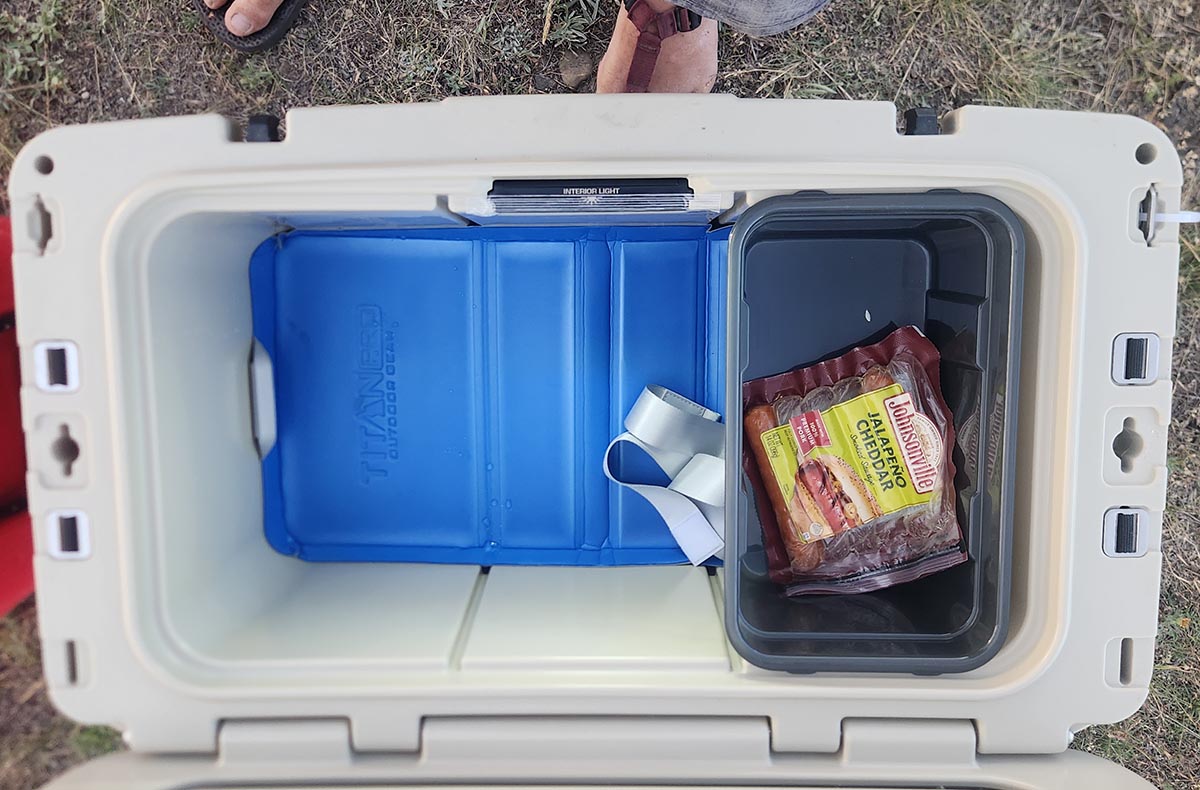
How easy is setup and maintenance?
When it comes to coolers, there really isn’t much to do in terms of setup. These three models come ready to use out of the box. Personally, I like to wipe everything down with a wet rag for a clean start.
Maintenance is another story. Cleaning is something every cooler will require. Fortunately, all of these have great drain plugs and smooth surfaces that wipe down quickly. Over time, the latches may degrade, the drain plugs may get lost, or the handles may get damaged. I use and abuse coolers and know this stuff will happen. All of the models come with parts that are easy to replace, making it possible to maintain and keep the cooler like new with simple replacements.
What design features make a difference for heavy outdoor cooler use?
All three of these coolers feature a rotomolded construction. Rotomolded coolers typically utilize thick, insulated walls and a shell that can withstand heavy abuse. As such, all of these models are built to insulate well and last a long time. Insulation and durability are the primary selling points for heavy-duty cooler designs.
Several other features are also crucial when it comes to good cooler design. These are a few of the features to look for and assess with notes on each model:
- Secure latches: The Yeti and RTIC both have rubber latches that work really well. They are simple, durable, and secure the lid instantly. They are also easy to replace when damaged. The Titan Pro is completely different with plastic mechanical latches. They are smooth, durable, and lock into place easily.
- Handles: All of these use a rope/strap-style handle system that is functional and very easy to replace. There are no plastic parts that will wear out quickly either.
- Drain plugs: Often overlooked, quality drain plugs are critical. All models have screw-in plugs that allow the user to drain the cooler without having to fully remove the plug. The Titan Pro has a retention system that tethers the plug to the unit, so you’ll never lose it. The RTIC has a plug on both sides— a large plug and a small one—which is super handy for controlling the drain rate.
- Bear-proofing: Every model is compatible with a padlock for bear-proofing and added security. Use a padlock to keep the lid closed and interior contents inaccessible.
- Interior dividers: RTIC and Yeti have baskets for easy interior divisions. They work well for separating produce and other dry goods from the ice compartment. The Titan Pro has a plastic bin with generous sizing for dry goods.
- Additional features: The Titan Pro takes the cake when it comes to add-ons. It has a bottle opener, interior light, tie-down bungees, the Ice Saver thermal cover, and nice cam latches.
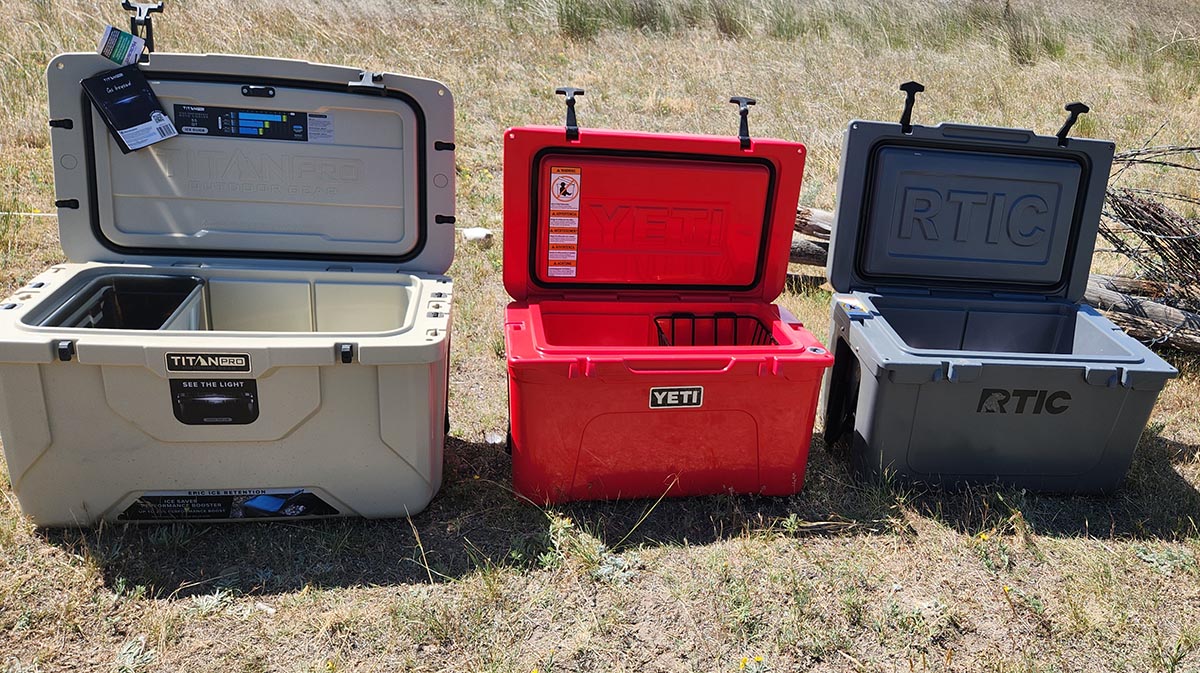
How do the performance and quality compare?
In terms of performance, I would take any of these coolers out with full confidence. They are all exceptional performers. I plan on using the Yeti and RTIC for boating and hunting, where they can specialize and endure harsh conditions and heavy use. The Titan Pro will serve as an all-around cooler that’ll see a lot of use at campsites.
How do the prices compare, and are they worth the money?
These are top-of-the-line coolers, and the prices reflect the quality and long-lasting build styles. The least expensive, the RTIC is a great choice for budget-minded shoppers who want a heavy-duty rotomolded cooler. The Yeti is next in line, priced in the $300 range, and the brand has a cultlike following for a reason. They are trailblazers in the market and stand by their products. The Titan Pro is the costliest, but it’s also more spacious and offers a few upgrades.
You can find coolers that cost much less, and they may be better for occasional users. But for frequent use while overlanding, van living, hunting, and camping during the summer, these coolers are worth the price tag as they are designed to endure heavy wear. They will preserve ice longer than budget options, and their latches and handles will last for a very long time. Considering the quality and brand-name trust, these are worth the price, in my opinion.
Should you buy a rotomolded cooler?
Are you looking for a cooler that can last a lifetime? Rotomolded designs are much tougher than most plastic coolers, and they won’t leave you hanging with broken hinges and ice that melts on the same day. Rotomolded coolers are perfect for folks who enjoy quality and demand top-tier performance in the field. I love the ability to take meat on camp trips while maintaining cold temperatures for several days or more.
At the end of the day, you can find plenty of cheaper models, but a rotomolded cooler is a worthy investment. Think through your needs and buy one if the benefits will improve your camping and outdoor experiences.
Where to Buy the RTIC/Yeti/Titan Coolers
Get the RTIC 45 cooler at:
Get the Yeti Tundra 45 cooler at:
Get the Titan Pro 55Q cooler at:
Meet the Tester
Zach Lazzari is a freelance writer splitting time between the great outdoors, travel, and DIY projects ranging from camper builds to home renovations and maintenance. His home base in Montana is the perfect testing ground for winter products and snow equipment. With over a decade of professional writing experience, he also covers a variety of other projects and maintenance topics for BobVila.com.

